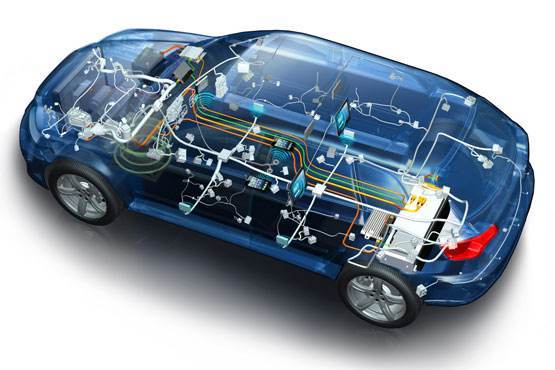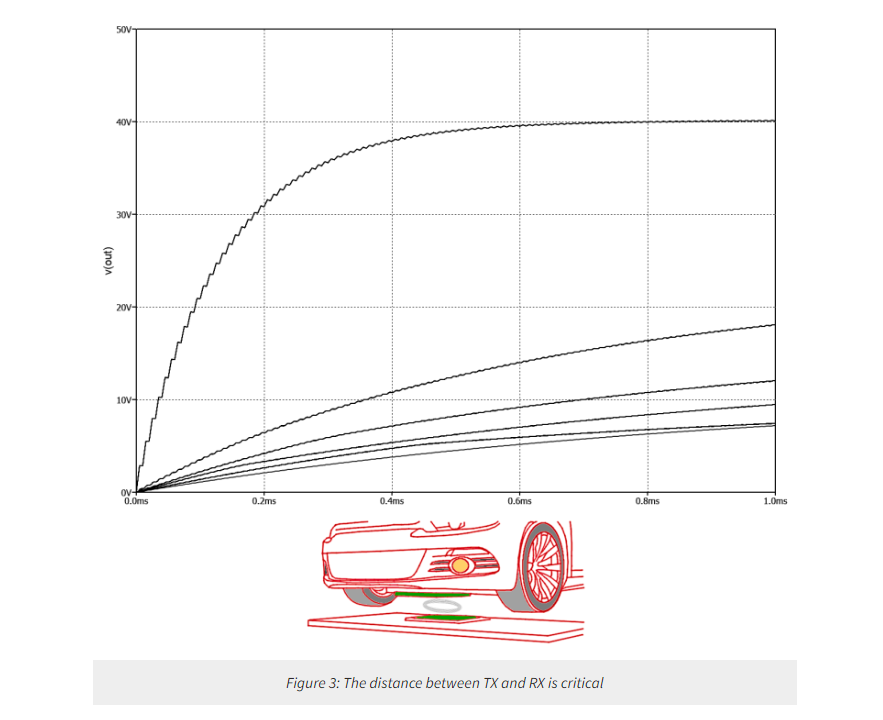
Wireless charging of electric vehicles is an emerging technology, but it has always been a dream of mankind, and it can allow us to completely change the way electric vehicles are charged. With it, your car can be fully charged automatically, without the need to connect any cables or sockets.
Introduction
This is a very convenient process, and the principle of the wireless charging system is based on electromagnetic induction. The charging circuit is usually located under the floor and connected to the grid. If a vehicle designed for this type of charging is located above the circuit, a magnetic field is formed in the car circuit, inducing an electric current to charge the battery. With it, there is no need for cables, which makes the whole process simpler and safer.
The risk of overheating and battery damage is also reduced to a minimum. However, unless the coils are placed very tightly together and properly aligned, this method is not the most efficient for power transmission. In order to improve the efficiency of the longer distance between the source and the receiver, magnetic resonance is implemented at the non-optimal alignment time. Most wireless systems are now smart and can detect the state of the battery and automatically stop charging when it is not needed. In addition, maintenance is reduced to a minimum, as no mechanical parts are prone to wear. Technology is making wireless charging systems increasingly efficient, despite the high cost. In addition, not all electric vehicles are compatible with this charging system, and the power used in the circuit is even lower than the cable charging system.
Charging can be done in stationary mode, when the vehicle is stationary on the charging stand, or in motion. In the second mode, charging circuits are placed on the road or near traffic lights, using special asphalt that can sense current. In the future, there may be dedicated lanes dedicated to charging electric vehicles during normal transport.
Wireless charging details
Wireless in-car charging, a charging method that eliminates the physical contact between the car and the power supply, has become very popular. This method uses electromagnetic induction and magnetic resonance, through which an electric current can be induced. The distance between the car and the charging system is quite critical, and often, a difference of a few centimeters is enough to greatly reduce the transferred energy.
Therefore, the parking must be very precise and the two coils (Tx and Rx) must be placed at a very short distance. The transfer of energy is achieved through a magnetic field that generates an induced current. In fact, there are two coils, one located under the vehicle and the other in a special container on the ground. If the two coils are very close to each other, the current is induced from the first coil to the second, so that the car battery can be charged, just as if the system were connected via a normal cable. Conceptually, wireless charging systems are very simple, but they deserve a lot of attention, as they will certainly be the way batteries and super capacitor restore energy in the future.
The system usually consists of two parts, a transmitter and a receiver (see Figure 1 for a general picture). The transmitter converts the input voltage into a magnetic flux, and the receiver converts that magnetic flux into a DC output voltage. In order to induce current between the first and second inductors, an AC signal is needed, its shape is irrelevant, but a sinusoidal signal is the most effective. Transferring energy without a physical electrical connection involves the presence of a switching circuit, usually of high frequency. For this reason, wireless charging systems often emit electromagnetic fields nearby.

When the two circuits are close enough, an identification process is established between the two parts, with the transmitter sending a signal from its coil and the receiving coil receiving the signal, so that the magnetic field passes through the two coils even though they are not physically connected. It is perfectly normal for a small amount of energy to be lost during this process. The receiving coil collects the magnetic field and generates alternating current, which travels through the power supply rectifier to the battery to be charged, this time direct current. To increase the magnetic field, the current on the transmitting circuit can be increased, the size of the coils can be increased, or the distance between them can be reduced.
Wireless charging is a very valuable technology, and its synergies with lithium batteries increase its value. With current technology, this type of charging is less efficient and slower than traditional charging methods, but companies are making huge progress every day. In order to maximize the transfer of energy, the size of the coil must be very large, inevitably resulting in excess volume. Therefore, it is necessary to optimally align the two inductors to maximize current transmission. The most modern systems provide visual and auditory monitoring to warn users of ongoing calibration methods. In addition, wireless charging is independent of battery brands, so devices of different brands can be easily charged. In addition, since there is no direct physical contact, all electrical and electronic components are waterproof and sealed, and there is no problem of contact oxidation.
The basic operation of the circuit
Figure 2 shows a schematic of a simple wireless charging system. The left part constitutes the transmitter and the right part constitutes the receiver. The transmitter generates an alternating voltage, which is boosted by a power device and passed through a transmission inductor. Near it is a receiving inductor, which contains the same transmitted signal, minus a small fraction of the loss. The signal is rectified and level, which can be used for battery charging. This inductive solution effectively represents a virtual transformer, as it has the same characteristics as a conventional transformer, but typically does not increase or decrease the voltage and only transmits the energy wirelessly.
The principle applied is mutual inductance between two inductors, which are placed very close to each other. The frequency of an AC signal usually has a fairly high value to generate the electromagnetic field necessary for signal transmission. Understandably, the transmitter needs an oscillator with a properly calibrated frequency and voltage.

It is interesting to note the response of the circuit to different coupling coefficients. Often, the car is not positioned precisely in the best position to charge, so the signal received by the receiver is not the largest. As mentioned earlier, a small displacement of the vehicle regarding the position of the charging plate can change the level of the charging voltage, even by a significant amount. The graph shown in Figure 3 shows the voltage level of the receiver rectification, with respect to the coupling coefficient of the two coils, which can vary depending on the position of the vehicle against the receiver plate. A small proportion of the ripple is deliberately added to the diagram to precisely emphasize that this current comes from an AC, then rectified source.

It takes a lot of strength
Wireless charging of electric vehicles requires high power operation. For example, there are now charging stations for electric buses of around 200 kilowatts, which can be charged in minutes and travel hundreds of kilometers. The aim of this research is to develop new technologies aimed at achieving zero-emission vehicle circulation. Experiments with wireless charging, which does not involve the use of cables and there is no physical contact between the charging infrastructure and the vehicle, have been hugely successful for some time now (Figure 4). When the vehicle is located above the charging pad, the transmitter detects its presence and begins to use a magnetic field to induce current.
The receiver plate starts to capture the induced current and uses it to charge the battery. The driver's only task is to place the car on the charging pad, and the process begins automatically. The power involved can be very high, reaching tens or hundreds of kilowatts depending on the system used. An important factor to consider is that, at present, wireless charging does not completely replace traditional electric vehicle cable charging, but acts as an auxiliary procedure for shorter and more frequent charging on the road. For larger-scale charging, the vehicle can be charged via a home wall box or charging station. According to recent research, at present, wireless energy transfer programs can enable electric vehicles to automatically inductive charging, with a very high efficiency of about 93%.

Conclusion
Technology is making important progress in the field of wireless charging of vehicles and the coming years it will be much more present on roads. The most important factor, as mentioned, is the correct positioning of the TX and RX, to efficiently capture the necessary amount of energy. The battery charger, then, can operate autonomously in terms of management, control, and automation. A great benefit of short recharges is the increase in the lifespan of the battery, as the reduced charging cycles preserve the batteries and extend their average life.
About US
Heisener Electronic is a famous international One Stop Purchasing Service Provider of Electronic Components. Based on the concept of Customer-orientation and Innovation, a good process control system, professional management team, advanced inventory management technology, we can provide one-stop electronic component supporting services that Heisener is the preferred partner for all the enterprises and research institutions.
